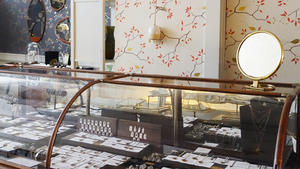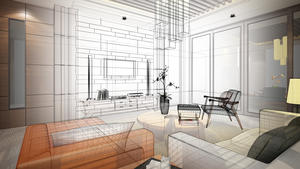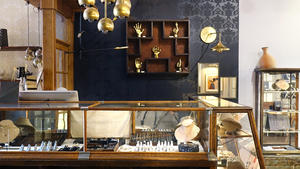De Gournay, Uhuru, Coco-Mat, Sasha Bikoff and Resource Decor are among the clients of Laura Bindloss, who founded Nylon Consulting in 2012 as a luxury home and lifestyle PR company for designers and brands throughout the U.S. and U.K. In this third installment of her Case Study columns for Business of Home (the first and second are here), Bindloss dives into what PR really means, and how you can make it work for your business.
What is the future of design media? It’s a question I am hearing from everyone—fellow publicists, our clients, and even editors themselves. With the wave of recent changes at major publishing houses, the shift in print editorial coverage and the rise of Instagram, the world I started my PR career in looks nothing like the one I work in today. So how do we reconcile with what we have in front of us, and where do we go from here?
While I certainly don’t have all the answers, I believe some things to be true about what might be next. The good news: There are more ways than ever before for people to search for product and design services. Whereas 10 or 15 years ago, people would have to wait a month for their next magazine issue to come out, today, they can research interior design firms or buy a new light fixture on their phone. If you’re overhauling your business practices (lead times and inventory management) for today, why are you still marketing the same way you were 10 years ago?
Below are my suggestions for navigating the media today:
Tweak stories for the medium. Print, digital and social media can all coincide happily together, but the way they present content is more different than it has ever been. While magazines always depended on advertising to survive, the lifeblood of digital and social media is clicks, traffic and engagement. Magazines’ websites are not a regurgitation of what runs in book—most of them have separate editorial teams, and they evaluate what makes a good story through a different lens than a print magazine would. If your project doesn’t work for an in-book feature, could it work online as a house tour, or in a service-based story about design?
A digital editor will want to know what’s interesting about the project to someone consuming content on their phone, which means a snappy headline about how you renovated this in X number of days, or that Cher used to live there. Think of the consumer browsing through stories on their commute or on their lunch hour—they consume content faster than ever, and design stories have to compete against content about politics and celebrities. A headline that grabs their attention and gets the click is what digital editors are looking for.
Pitch for web—digital stories are not a cheaper, lower-quality version of print. Guess what people do when they want to find information? They look online (or on social media). The majority of the population sits at a desk all day or views the news on their phone or tablet, and that’s where they’re going to seek information too. Digital placements help your website to rank (which is really important when someone is typing in “interior designer New York” or “the best designer sofas”). Digital media companies’ content also come up first in search results. Try Googling for the best designer sofas or the best white paint colors, and many of the top entries are editorial stories, not brands’ sites. Plus, digital is the gift that keeps on giving—a web story will continue to refer traffic for months and years to come.
Sell product and don’t have e-commerce? Consider getting it. Unless you sell an unfinished good, it is getting continually more difficult to justify why e-commerce shouldn’t be part of your sales (and now, media) strategy. If it’s something you’re not sure about and want to test before you invest capital into building it, it is worth exploring partnerships with digitally native e-commerce vendors to see if there’s market demand. There are plenty of online retailers that offer relatively seamless integration for you to try with your products. The media is moving away from featuring companies digitally who do not have an e-commerce presence—and as the majority of opportunities are online, it’s a necessity if you want to continue to gain press placements.
Have e-commerce? Consider affiliate marketing. More and more media sites are giving preference to stories that feature brands that have affiliate partnerships—essentially, if someone buys a product as a result of reading their article, the media company makes a small commission. And no, this isn’t just reserved for bloggers who make money if you buy that ballet flat from J. Crew. The New York Times, Huffington Post, Business Insider, Lonny, and many Condé Nast sites all participate in affiliate partnerships. If digital product placement is a big part of your strategy, affiliate partnerships are a necessity. Pepperjam and CJ Affiliate are two to start with, but I suggest you research and see what might work best for your business.
Invest in content. It is the currency of today. Whether you are a service provider or a manufacturer, the currency required for a healthy flow of media placements is strong photography. Magazines have less budget to shoot their own photography, digital websites will build entire stories around strong images, and outlets consider their Instagram feeds with the same scrutiny they give their covers (and they will not consider images that don’t look professionally shot unless it is a “behind the scenes” story). The most important part of your marketing budget is the money you invest in photography and styling—if you don’t have a lot to spend, spend the money here first.




























